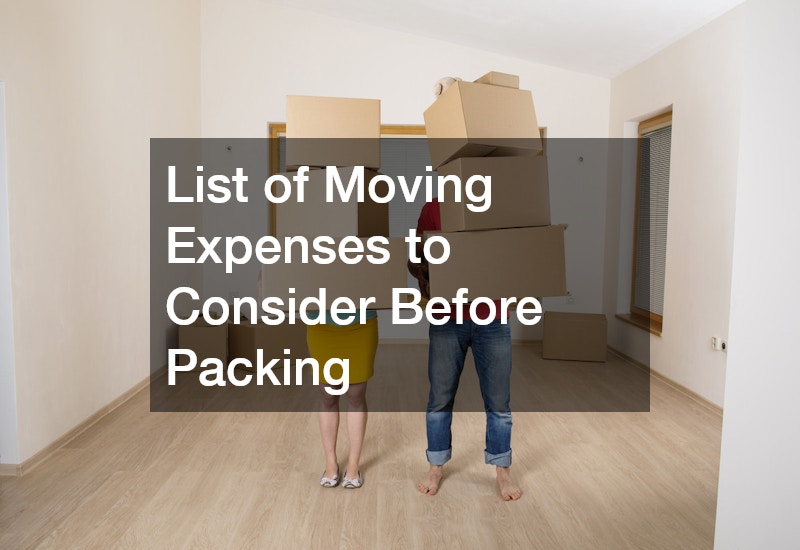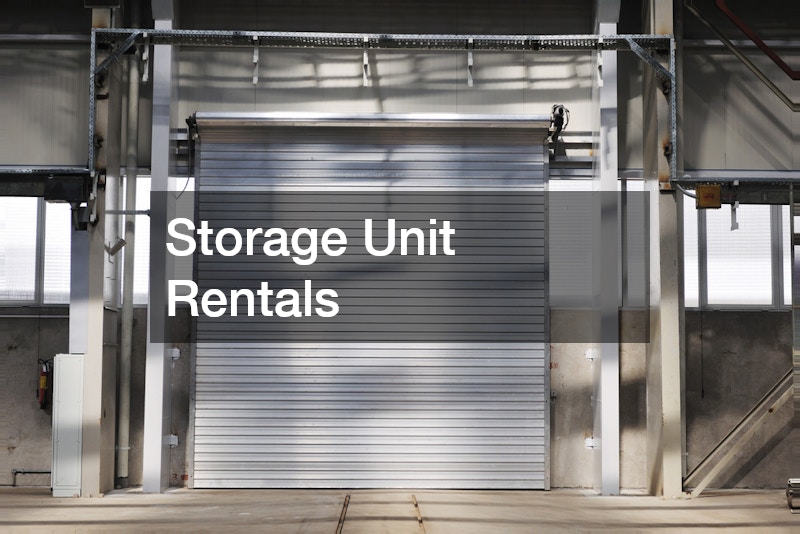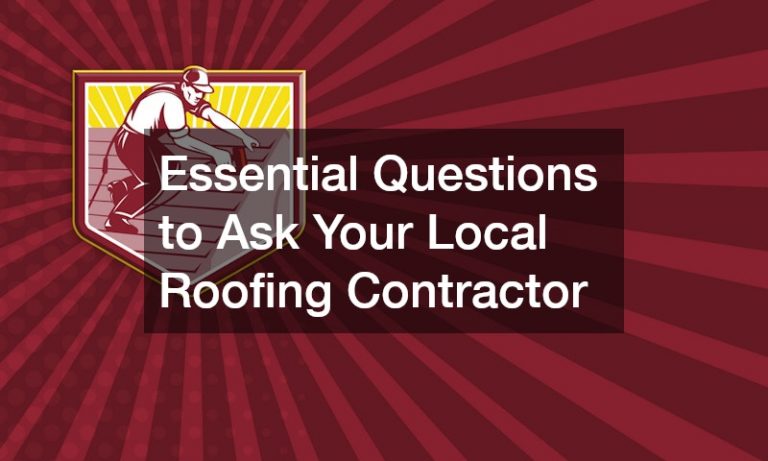

Moving into a new home is a thrilling milestone, but the financial reality behind the process can be overwhelming if you’re not prepared. The cost of moving goes far beyond boxes and trucks, encompassing everything from repairs and inspections to logistics and setup in your new space. Understanding the full scope of expenses is the first step toward avoiding unnecessary stress, last-minute surprises, and budget shortfalls.
Creating a detailed and personalized list of moving expenses before packing a single box is one of the smartest things you can do. Whether you’re relocating to a nearby suburb or settling into a newly built property on one of the many pieces of lands for sale across the country, having clarity on costs makes all the difference. Let’s explore the full range of potential expenses that may arise before, during, and after your move.
Hiring Professional Help
One of the largest and most obvious moving costs is hiring a professional moving service. These services offer packing, loading, transport, and unloading, but rates can vary widely depending on location, time of year, distance, and the volume of your belongings. Long-distance moves, in particular, are often priced based on the weight of your shipment and miles traveled, which can add up quickly. Don’t forget to ask whether quotes include basic insurance or if you’ll need to pay extra for full-value coverage.
Another factor is the type of service. Full-service movers can pack up your home for you, but that convenience comes at a premium. You might also need to pay for storage-in-transit if your new home isn’t ready by move-in day. While DIY moves using rental trucks can be cheaper upfront, they still come with fuel, tolls, equipment rentals, and time commitments. Regardless of the method, this is a foundational cost in any comprehensive list of moving expenses.
It’s also worth noting that many moving companies increase their rates during peak seasons—particularly summer and the beginning or end of each month. If your schedule allows flexibility, booking during off-peak times can save you hundreds of dollars. Always confirm that your movers are licensed, insured, and well-reviewed to avoid scams and broken items.
Local Moving Logistics
Even a move across town can bring logistical challenges and hidden charges. When working with a local moving company, it’s common to be charged hourly rates, but that’s just the beginning. Travel fees, fuel surcharges, and minimum-hour requirements can significantly increase your final bill. Additionally, if your building has narrow staircases, no elevator access, or long walking distances to the truck, you could be looking at extra labor charges.
Many people assume moving locally means minimal cost, but extras can snowball fast. For example, if the local moving company has to park far from your door, you may need to cover parking permits or risk ticket fines. Unexpected circumstances like rain or delays can also extend the move and inflate costs. Always ask for a written estimate that breaks down each charge so you can budget accordingly.
For apartment dwellers, confirm whether your property manager requires proof of insurance from movers or reserves specific move-in windows. Coordinating this in advance with your moving service avoids penalties and keeps your move on track.
Preparing Your Vehicle
Long-distance relocations often mean you’ll be relying heavily on your personal vehicle to get you, your family, and sometimes your pets to your new home. Before hitting the road, invest in a comprehensive vehicle inspection. At a minimum, have your tires, brakes, lights, fluids, and battery checked to prevent breakdowns along the way. No one wants to end up stranded halfway through a cross-country move.
The cost of even minor repairs from an auto repair shop can sting if you’re already juggling multiple moving expenses. Plan ahead to avoid being forced into emergency service while on the road. Also consider upgrading your roadside assistance plan, especially if you’ll be traveling through rural areas.
If you own multiple vehicles or recreational equipment like motorcycles or ATVs, you may need to transport them separately. Towing trailers, shipping services, or auto transport companies all come with additional fees. These costs can sneak up on you and should definitely be included in your list of moving expenses.
Packing Materials and Supplies
Packing may seem like a straightforward task, but the cost of supplies often catches people by surprise. From cardboard boxes and bubble wrap to packing tape, paper, and markers, the bill adds up fast. Specialty boxes for dishes, televisions, and mirrors are more expensive but help protect valuable items.
Some people try to save by collecting boxes from grocery stores or friends, but these aren’t always reliable or sized appropriately. If you want sturdy, uniform packing materials, you’ll likely need to purchase them new or rent reusable containers. Many professional movers sell these supplies directly—at a premium—so shop around for better deals at office supply or home improvement stores.
Also remember that packing involves more than just materials. You may need to take time off work or recruit friends and family. If you’re short on time, you might even consider hiring professional packers, which adds labor costs to your growing list of moving expenses.
Home Repairs and Touch-Ups
Whether you’re vacating a rental or selling a home, odds are you’ll need to make some repairs before you go. These can range from minor cosmetic fixes like patching nail holes and repainting walls to more serious jobs such as appliance servicing or structural work. If you’ve been putting off roof repair services, now is the time to address them—especially if they could impact your security deposit or property sale.
Plumbing concerns like slow drains may require professional drain cleaning services before the new occupants move in. Likewise, loose railings, cracked tiles, or water damage need to be repaired to meet lease or sale requirements. These types of fixes often cost more when rushed, so plan well in advance.
Keep in mind that if you’re listing your home among other real estate for sale, presentation matters. Small upgrades or fixes can increase your home’s value and help it sell faster. Whether you DIY or hire professionals, build a buffer in your budget for pre-move repairs.
Pre-Move Cleaning
Deep cleaning is a vital but often overlooked part of the moving process. Tenants risk losing their deposits if they leave behind dust, grime, or trash, while sellers could deter buyers if the property isn’t spotless. Even if you’re moving from one house and land for sale property to another, cleaning is an essential transition step.
If time is tight or the space is large, consider hiring a professional cleaning service. Rates vary by square footage and condition, but expect to pay more for homes with multiple bathrooms or heavy pet damage. Carpet shampooing, window washing, and appliance cleaning often come at an added cost.
Whether you choose to clean yourself or hire help, supplies such as bleach, gloves, mops, and vacuums still carry a cost. Factor these in as another important entry on your list of moving expenses.
Storage Unit Rentals
Temporary storage is a necessity for many people in transition. Maybe your move-in date doesn’t align with your move-out date, or maybe you’re downsizing and need extra time to sort through belongings. Renting a storage unit provides flexibility but comes with its own fees.
Rates are based on size, location, and features like climate control. For example, if you’re moving into a newly built property on a piece of land that’s still being developed, a storage unit may be the only option for securing your furniture in the meantime. Keep in mind that month-to-month rentals may cost more than long-term commitments.
Additionally, you’ll want to insure your items while in storage. Some facilities require you to purchase their coverage or prove you have outside protection. Add storage fees, moving truck access, and lock purchases to your total moving budget.
Dumpster Rentals and Junk Removal
Decluttering is a vital part of moving, and for those who have lived in the same home for years, the amount of junk can be shocking. Instead of multiple trips to the landfill, renting from one of the many local dumpster rental companies may be the easiest solution. These dumpsters come in various sizes and are dropped off and picked up on your schedule.
While prices vary based on size, location, and weight limits, this convenience doesn’t come cheap. Some companies charge overage fees if your debris exceeds certain thresholds or contains restricted materials like electronics or paint. Be sure to read the fine print when booking.
Alternatively, full-service junk removal companies can do all the heavy lifting, especially for bulky furniture or old appliances. Whether you go the DIY route or hire help, you’ll need to plan for waste disposal in your list of moving expenses.
Setting Up Your New Home
Moving isn’t complete when you arrive—you still need to get your new home up and running. Connecting water, electricity, internet, and other utilities often involves activation fees, deposits, or technician visits. If you’re moving to a rural area or a newly constructed property, setup costs can be higher.
Don’t forget recurring services you’ll need right away. If the property hasn’t been occupied recently, you may want to schedule pest control services as a preventive measure. You may also need to replace locks, buy window treatments, or install basic fixtures.
If your move involves raw house and land for sale properties, you may also be responsible for grading, landscaping, or utility line connections. These aren’t small expenses and can heavily influence your move-in timeline and budget.
Addressing HVAC and Plumbing Issues
Before unpacking, it’s crucial to ensure your heating, ventilation, and air conditioning (HVAC) systems are functioning properly. Scheduling an HVAC repair technician to perform a tune-up before you arrive can help prevent surprises—especially in extreme weather seasons.
Similarly, check all water sources and drains for leaks, odors, or clogs. If necessary, contact plumbing services to address these issues before you settle in. Nothing stalls a move like a non-working bathroom or lack of hot water.
Preventive maintenance may cost a few hundred dollars, but it protects your investment and comfort in the long run. These are smart, proactive entries in your list of moving expenses that can ultimately save you thousands in emergency repairs.
Septic and Sewer Inspections
If your new home is on a rural lot or older property, it might use a septic system instead of municipal plumbing. In this case, it’s essential to schedule a septic tank service to inspect and possibly pump the system before moving in. These systems are expensive to repair and can fail unexpectedly if not maintained properly.
Likewise, homes connected to public sewer lines should still undergo a sewer scope inspection, especially if the house is more than 20 years old. Tree roots, cracks, and blockages can cause backups, which are both disgusting and costly. Sewer drain repairs can range from a few hundred to several thousand dollars, depending on severity.
Add these checks to your to-do list if your future property falls into either category. Skipping this step could lead to messy, expensive surprises shortly after move-in.
Final Closing and Transition Costs
Beyond the physical move, there are dozens of smaller financial details involved in transitioning to a new home. These include changing your address, updating your driver’s license, forwarding mail, and transferring or starting insurance policies. Each item might only cost a few dollars, but together, they add up quickly.
If you’re buying a property, especially one listed among the growing inventory of real estate for sale, closing costs can be significant. These may include loan origination fees, appraisal charges, title insurance, and agent commissions. Ensure these financial obligations are well-documented in your list of moving expenses to avoid budget shocks.
For renters, fees for lease termination, pet deposits, or overlapping rent periods may also apply. Even if you’re organized, transitioning from one property to another always brings some administrative costs.
A successful move isn’t just about getting from Point A to Point B—it’s about navigating every financial obstacle in between. With so many variables to track, your best defense is a detailed and thoughtful list of moving expenses. From the initial call to a moving service to final touches like pest control services and roof repair services, every dollar matters.
Whether you’re moving into a freshly renovated city apartment or building on rural pieces of lands for sale, understanding what lies ahead helps you plan accordingly. By breaking the move down into categories and tracking costs as you go, you’ll ensure your transition is smooth, strategic, and financially sound. We hope this list of moving expenses was helpful in your journey!







